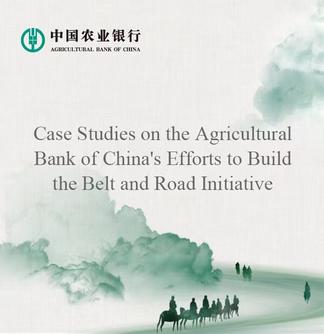Attendees of the 6th World Media Summit watch performance at the grand bazaar in Urumqi, northwest China's Xinjiang Uygur Autonomous Region, Oct. 16, 2024. (Xinhua/Hu Huhu)
China's openness invites a greater understanding of its traditions, culture and achievements. Xinjiang, with its unique cultural blend, stands as a testament to China's progress and inclusiveness, offering lessons for the world in sustainable development and social harmony.
by Ana Vojinovic
Before departing for the 6th World Media Summit in Urumqi, the capital of China's Xinjiang Uygur Autonomous Region, I received enthusiastic recommendations from business associates and friends who insisted that visiting China was a must. They emphasized the nation's remarkable progress over recent decades. Clearly, outdated narratives about Chinese poverty and underdevelopment no longer hold true.
In Urumqi, I saw impressive infrastructure and well-preserved architecture -- a stark contrast to some Western urban centers plagued by homelessness, drug abuse and neglected public spaces. A large portion of China's population are now part of the middle class. Despite the progress, the portrayal of China in Western media often focuses on negative stereotypes, depicting it as polluted, oppressive and culturally destructive. My observations in Xinjiang challenged these claims, particularly those concerning the alleged erosion of cultural heritage among ethnic groups.
Since ancient times, Xinjiang has served as a vital link between China and the rest of the world through the Silk Road. This diverse border region has long been home to multiple ethnic groups, and today it occupies a strategic position in the Belt and Road Initiative (BRI).
Attendees of the 6th World Media Summit select souvenirs in the ancient city of Kashgar, northwest China's Xinjiang Uygur Autonomous Region, Oct. 16, 2024. (Xinhua/Wang Yijie)
With principles of openness and tolerance, the initiative fosters harmony among various cultures and religions. Media representatives from across the globe visiting Xinjiang in October witnessed this inclusiveness firsthand.
Significant investments in science, education and infrastructure have transformed Xinjiang. At the Xinjiang Islamic Institute, we observed nearly 1,000 students engaged in studies supported by a well-stocked library and modern facilities. The policies promoting equal education opportunities for all social classes, genders and ethnic groups have yielded positive results. Unlike regions where caste systems or capitalism have widened social divides, China's socialism with Chinese characteristics has ensured equitable development.
Uygurs and other ethnic minority groups, comprising over 50 percent of Xinjiang's population, are active participants in the workforce, occupying roles ranging from market vendors to engineers in the automotive industry. Economic investments and social inclusivity have proven successful, with China's 56 ethnic groups contributing to modernization efforts.
Xinjiang exemplifies China's development success. My visits to regional branches of large Chinese enterprises underscored this progress. Chinese automobiles are gaining popularity in Europe, and my visit confirmed their promising future. Additionally, China's commitment to sustainable development is evident in Urumqi's wind farms. The region also boasts ideal conditions for agriculture, bolstered by government efforts.
Urban planning in Urumqi highlights China's foresight. The city's clean air and tranquil atmosphere defy expectations for a metropolis. Urumqi and Xinjiang at large have become popular destinations for tourists, offering lakes, mountains, ski resorts and well-maintained trails. The regional government's focus on cleanliness and tourism development is evident.
This photo taken by Waref Komaiha, an attendee of the 6th World Media Summit, shows a dance performance at "Guli's Home," a local resident's yard converted into a tourist resting place, in Kashgar, northwest China's Xinjiang Uygur Autonomous Region, Oct. 16, 2024. (Photo by Waref Komaiha/Xinhua)
Throughout Urumqi, Uygur culture is prominent, featuring bilingual signage, traditional music, dances and folk costumes. Hospitality, a hallmark of Chinese society, is abundant among Uygurs, who welcomed visitors with singing and dancing even in remote tourist spots.
Criticism from Western media about excessive security measures in Xinjiang appears exaggerated, especially considering the bilingual signage absent in some European countries. Security precautions are necessary due to past extremist incidents influenced by external forces. Despite this, separatist groups receive disproportionate coverage in Western media.
Xinjiang, as a pivotal part of the BRI, faces challenges from misinformation campaigns aimed at undermining China's economic influence. However, the rise of multilateral cooperative platforms like BRICS signals a shift toward a more equitable global order. China's governance model has effectively safeguarded rights and freedoms while enabling scientific and technological advancements that promise a prosperous future.
China's openness invites a greater understanding of its traditions, culture and achievements. Xinjiang, with its unique cultural blend, stands as a testament to China's progress and inclusiveness, offering lessons for the world in sustainable development and social harmony.
Editor's note: Ana Vojinovic is head of the Communication and Promotion Department of Radio Television of Republika Srpska in Bosnia and Herzegovina.
The views expressed in this article are those of the author and do not necessarily reflect those of Xinhua News Agency.







 A single purchase
A single purchase









